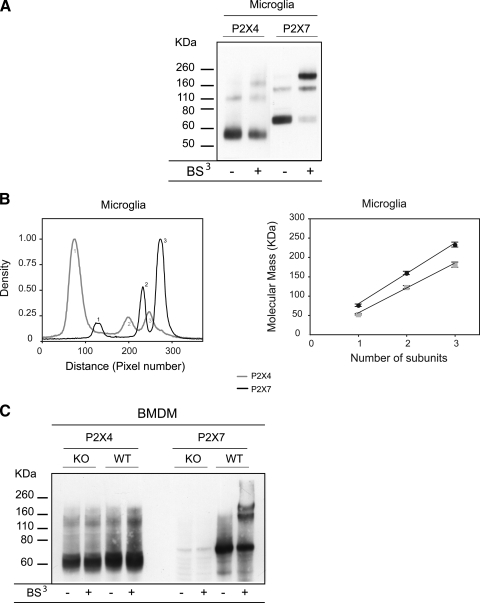FIGURE 4.
Use of a surface cross-linking reagent (BS3) shows high levels of P2X7 at the surface of microglia and BMDMs but very low levels of P2X4. A, microglia were incubated with the membrane-impermeant cross-linker, BS3 (1 mg/ml), lysed. and solubilized. Proteins were subjected to SDS-PAGE and immunoblot analysis. B, densitometric analysis indicates that P2X4 receptors were mostly inaccessible to BS3 and ran as monomers, giving rise to a dominant first peak. In contrast, P2X7 receptors were mostly accessible to BS3 and stabilized in a trimeric form. The percentage of trimers was 20.1 ± 3.5% (n = 3) for P2X4 and 80.7 ± 3.9% (n = 3) for P2X7. Analysis of molecular mass indicates that trimers were of a size consistent with homomeric complexes. C, BMDMs from WT and P2X7–/– cells were subjected to cross-linking by BS3, followed by SDS-PAGE and immunoblotting. In WT cells the proportion of cross-linked P2X7 was 71.2 ± 1.9% (n = 3), whereas we were unable to reliably detect any cross-linked P2X4 receptors. KO, knock-out.

